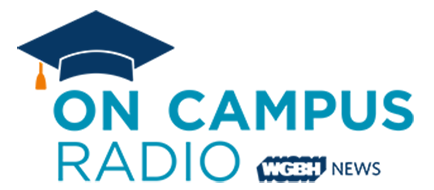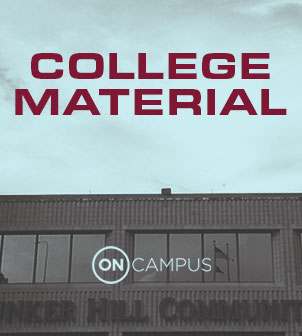When a state budget impasse drained money from public universities and colleges in Illinois beginning in 2015, some were forced to lay off hundreds of employees, shorten their semesters, even warn they might shut down. Enrollment plummeted. Credit ratings fell to junk status.
Chicago State University, for instance, which has a student body that is mainly black and Hispanic and drawn from its neighborhood on the city’s South Side, cut 300 workers from its payroll and — its very future in limbo — managed to attract fewer than 100 new freshmen in the fall.
The flagship University of Illinois, far more of whose students are white and wealthier, was not immune from the predicament. But with cash reserves to tap, and an increase in enrollment that brought in more tuition revenue, it has suffered a far less drastic impact from the still-ongoing budget crisis.
States have cut spending on higher education since the last recession by a collective $8.7 billion a year, according to the Center on Budget and Policy Priorities, or CBPP. That will come as no surprise to students and families who have seen their tuition at four-year colleges and universities rise as a result by an average of 33 percent during that time.
But the cuts have been uneven. A closer look shows they’re taking a greater toll on colleges and universities such as Chicago State that serve low-income and nonwhite students, while flagships that enroll larger proportions of whites from higher-income families have been less affected.
Among the reasons is that flagship schools have other sources of income to fall back on, including endowments, research funding, deep-pocketed donors, and out-of-state and international students who can afford to pay a premium tuition price. Community colleges and other, regional public universities don’t have those advantages.
“There’s an old saying that budget cuts give flagships a cold and regional campuses pneumonia,” said Tom Harnisch, director of state relations and policy analysis at the American Association of State Colleges and Universities.
Community colleges spend $10,804 per student on education, down $531 per student since before the recession. Public flagship universities spend $17,252, up $404.
Critics say the cuts are also due to politics and to new rules tying state spending to institutions’ performance on such things as graduation rates, putting colleges that take students who are less well prepared at a disadvantage.
Whatever the cause, those critics say, the trend is further widening the racial and socioeconomic divide among different types of universities and colleges, shifting money away from those whose students generally need the most support in favor of the ones whose students generally need the least.
Eighty-three percent of Chicago State’s students are black and Hispanic and about the same proportion have incomes low enough to qualify for federal financial aid, U.S. Department of Education figures show. That compares to 14 percent of the students at the University of Illinois’s principal Champaign-Urbana campus who are black and Hispanic and 21 percent who are low-income.
“We’re creating a caste system in public higher education,” Harnisch said. “The per-student funding is higher for students at public flagships who are often the most prepared and most likely to graduate, but at the community colleges and the regional universities, it’s significantly less.”
Stephen Brier, a professor of urban education at the City University of New York Graduate Center, is more blunt. “This is classism and racism at the worst and most profound level,” said Brier, co-author of the new book Austerity Blues: Fighting for the Soul of Public Higher Education.
Community colleges — which enroll 57 percent of Hispanic and 52 percent of black students, and 41 percent of students whose parents did not themselves go to college, according to the Urban Institute— spent $10,804 per student on education in 2013, the last year for which the figure is available from the Delta Cost Project at the American Institutes for Research, which tracks this. That’s down $531 per student since before the recession, when adjusted for inflation.
Those institutions are being asked to do more, such as provide remedial education, workforce training, and professional certificates to students who often come from low-performing public high schools. Far fewer of those students graduate, moving on to work that pays less than they could have earned if they had, and then they don’t move up the economic ladder higher education was supposed to help them climb.
In spite of budget cuts, meanwhile, large four-year public universities with faculty that conduct research spent $404 more per student since the start of the recession, or $17,252. Those places are more likely to enroll affluent students who attended higher-quality secondary schools and who are already academically well prepared.
“It’s the classic story of building the best hospitals for the most healthy people. That’s how higher education works, too,” said Tony Carnevale, an economist and director of the Georgetown University Center on Education and the Workforce, which has been studying this trend.
“It’s perverse,” said Carnevale. “The funding system in higher ed denies the basic principles of public finance economics, which is that you’re supposed to spend the money where the need is the greatest.”
If community colleges were once the safety net of higher education, these changes mean they aren’t any more, according to a new study from the Institute for Research on Higher Education at the University of Pennsylvania’s Graduate School of Education.
It found that, for a growing proportion of low-income Americans, even community college is unaffordable. That’s because, in more than two-thirds of states, tuition increases forced largely by budget cuts have pushed up the proportion of family income required to pay for attending one. In 37 states, the study found, students would have to work 20 hours a week or more at a minimum-wage job to go full-time to a community college.
This is occurring as public and private financial aid meant to help poor students also continues to shift toward favoring wealthier ones.
Related: Can Massachusetts Support Four Public Universities?
“I can only see [education attainment] gaps growing in terms of race and ethnicity and certainly in terms of income if we don’t do something about this,” said the Penn institute’s executive director, Joni Finney.
In fact, she said, even in states that are beginning to put money back into higher education, “My sense is that it’s pretty much business as usual. It’s kind of a winner-take-all game. Flagships get larger dollars per student, then it goes down the pecking order.”
Politics are also at play. “When you think about, in state legislatures, who has the political clout, I’m going to bet you it’s the alumni from those flagships,” said Nick Hillman, an associate professor of educational leadership and policy analysis at the University of Wisconsin, Madison.
And “if we’re talking about state legislatures, we’re also talking about white men who may be identifying more with people who look like them who go to four-year flagships, rather than lower-income students of color who go to community colleges,” said Colleen Campbell, senior policy analyst for the Association of Community College Trustees.
As for the students who attend community colleges and regional public universities, “They are not the preferred constituents of the people making the legislative and budgetary decisions and they don’t have the political clout,” said Brier. “And if they’re immigrants as well as students of color, doubly so.”
Changes in funding calculations that reward or punish institutions based on such things as their dropout and graduation rates — called performance funding — are also disproportionally affecting community colleges and regional public universities, according to research by Hillman.
In a study of colleges and universities in Tennessee, he found that performance funding was siphoning more money to the top public universities with the most white and higher-income students, while the campuses that enrolled more racial minorities and low-income students lost ground.
Higher education “isn’t just reinforcing inequality, it’s exacerbating it,” said Hillman.
Presidents of flagship universities argue that their institutions have a huge economic impact on their states by creating the most graduates and startup companies.
That was the basis of their loud protests in Kansas, one state where $31 million in higher-education budget cuts last year took slightly more of a bite out of Kansas State University and the University of Kansas on the grounds that they were better able to absorb them thanks to outside funding.
In an angry joint letter distributed widely by their alumni associations, the heads of the two flagships said they were being punished for successfully winning research grants, and that the legislature was sending a message that Kansas “actively penalizes our research universities when they succeed.”
But the state senator behind the shift, Republican Jacob LaTurner,” said, “It’s important to deal with reality, and the reality is that a cut affects a regional public institution differently than it does a flagship institution.”
A graduate of Kansas’s Pittsburg State University, which is in his district, LaTurner said, “There’s a great argument to be made that regional public institutions should get more support. I’m not even going that far. All I’m saying is, in a world of diminishing state investment in higher education and higher tuition rates, we have to look at this in an equitable way. In the past we’ve all lived and died together. And that just doesn’t make sense.”
Even in Kansas, however, the issue isn’t settled. The redistribution of budget cuts was a one-time measure, up for likely contentious reconsideration this year.
“This is an issue we’re going to be grappling with again,” LaTurner said.
This story was originally published on January 3, 2017, by The Hechinger Report, a nonprofit, independent news organization focused on inequality and innovation in education.










